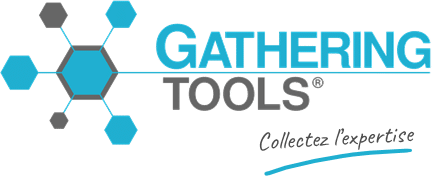As in many companies with thousands of employees, you need to better track your workforce, but your HRIS applications do not allow you to do so. So, logically, you have implemented a procedure in Excel… but you have reached the limits of what is manageable with a spreadsheet. There are several options available to you to make this process more reliable. Are you torn between vertical HR solutions and data consolidation with Gathering Tools? Discover six criteria to guide you in your choice and decide between these two options.
Functional scope: what exactly do you need?

What are the shortcomings of Excel? Why do you want to change tools? These are questions you should ask yourself before you start looking for a new tool.
If the limitations are related to the robustness, power and security of the tool, there is no point in investing in an HR solution that offers a plethora of features you will never use. This is where Gathering Tools comes into its own: it takes existing Excel processes and structures and secures them, interconnecting them with your HRIS. If, on the other hand, you need to go further in managing your workforce and HR ‘extras’, a vertical solution may be required to complement your HRIS.
On paper, the vertical HR solution wins out, as it covers more human resources processes. However, it can quickly become too comprehensive or complex if the scope exceeds your actual needs. It is therefore necessary to map out your expectations before getting started.
Starting point: do you want to start from scratch or build on what you already have?
Where are you at with your workforce monitoring? Do you need to start from scratch, or are your Excel processes already a solid starting point?

Verticalised HR solutions are very comprehensive, but must be adapted to each company and its specific organisation (subsidiaries, languages, salary structure, indicators to be monitored, etc.). It is therefore often not easy to start from scratch. This requires rethinking processes and adapting them to the solution, which is then configured and deployed. As a result, this can be time-consuming, costly and (overly) restrictive.
With Gathering Tools, Excel files are reused and improved if necessary. The solution makes the workflow and cells more reliable by securing them, locking data that must not be changed, setting up automated consistency checks, etc. This simplifies the project.
For well-defined workforce monitoring processes, Gathering Tools is the winning solution. It provides what is missing: reliability and security.
Deployment: are you ready to integrate new tools?
The deployment of the solution is an important factor to consider. With a specialised HR solution, you have two options:
- Deploy a new module of an HRIS solution already in place in the company. This makes deployment easier, as the software is already configured. Only the new features need to be activated.
- Deploy a new solution. In this case, deployment can be more complex, as it is necessary to retrieve the necessary data, configure APIs and interconnections, develop or adapt workflows, train employees, etc.
The Gathering Tools solution, on the other hand, uses existing Excel files, offers an API to connect directly to the HRIS, and retrieves data from the information system. The only adaptations required are the identical transposition of Excel files into forms and the description of the collection and consolidation workflow. Deployment is therefore faster.
Once again, the Gathering Tools solution comes out on top.
Training: how to manage the adoption of a new tool?

When deploying new tools, one of the key criteria for success is user acceptance. If you choose a vertical HR solution, take this aspect into account, as training can be burdensome. HR managers are not always willing to increase the number of tools they use.
Gathering Tools offers a look and feel similar to Excel. This eliminates the need for adaptation time, with quick training for HR administrators. In addition, as a Proof-Of-Concept (POC) is always carried out prior to deployment, it can be reused as is and enhanced, eliminating the need for initial training.
As you can see, Gathering Tools seems to be the most suitable solution for faster adoption.
Scalability: what are the future plans?
Whether you opt for a vertical HR solution or Gathering Tools, software publishers today offer continuous upgrades to adapt to market needs and remain competitive.
HR business solutions adapt to regulatory changes and are regularly updated with new features to facilitate HR management.

Gathering Tools, on the other hand, is designed to adapt to different processes and professions that use Excel. This makes it easy to integrate regulatory changes. In addition, the solution continuously incorporates new technologies (SaaS availability, LDAP authentication, etc.).
At first glance, both solutions are equal on this criterion.
Cost: what investments should you plan for?
Last but not least: cost. What is your budget for workforce management? How many HR managers are involved? Which business model do you want to use? These are all questions you need to ask yourself before making your choice. Licence purchases, employee subscriptions, technical support, maintenance… don’t forget the hidden costs. The devil is often in the details.
Objectively, based on numerous projects, the Gathering Tools solution is more cost-effective than vertical HR solutions when there are more than 50 HR managers filling out workforce tracking forms. The winner on this criterion therefore depends on the size of the project and your organisation.
At the end of these different rounds, tally up the scores and see which solution comes out on top. On paper, Gathering Tools wins on most criteria, but vertical HR solutions have their own merits. It all depends on your scope of action and your objectives. To find out if Gathering Tools meets your workforce tracking needs and extend the match, feel free to contact us!










